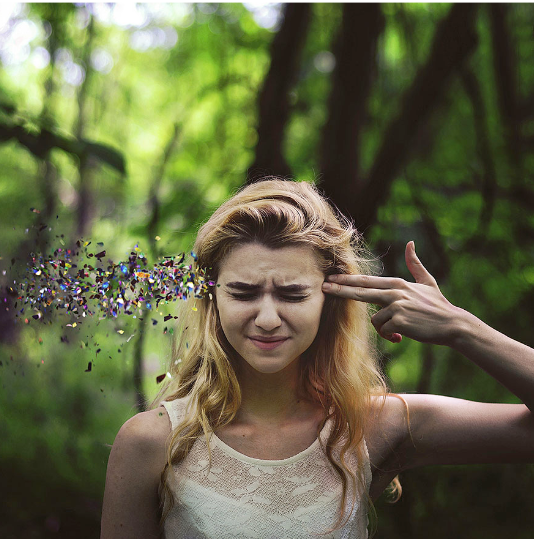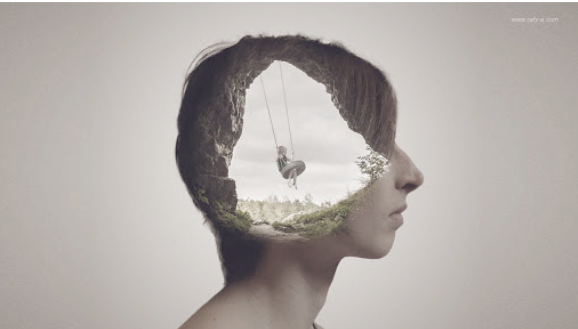Digital Photography and Imaging | Task 9
Wong Jia Yi Carmen 0357198
Bachelor Of Design (Honours) In Creative Media
Lectures
WEEK 9: DIGITAL SURREALISM
fig 1.0. Lecture Slides Week 9
From this lecture slide, I understood...
Realism Vs Surrealism
*Realism~ Typically involves non-exotic and non-extraordinary subject matters and themes. The phrase "there is no need to think outside of the box" implies that creativity in this context doesn't require unconventional or extraordinary thinking, as the emphasis is on depicting aspects of the real world. The term "real" is used here to highlight a preference for representing the familiar rather than exploring fantastical or imaginative realms.
*Surrealism~ The focus is on exploring the subconscious mind, and the subject matter revolves around dream images. The intention is to deviate from the ordinary and challenge our conventional understanding of reality. This suggests a departure from straightforward realism in favour of a more imaginative and subjective approach, possibly incorporating surreal or abstract elements to convey a deeper exploration of the subconscious and dream-like experiences.
- Dadaism
An art movement that emerged during the early 20th century, around World War I. Dada artists rejected traditional artistic conventions and sought to express their discontent with the social and political establishment. Dadaism had a focus on expressing opposition to war. The artists associated with Dada often used their work to criticize and protest against the violence and destruction caused by war. The style of Dadaist artworks, Satirical means that the art may use humour, irony, or exaggeration to criticize or mock its subject, while nonsensical suggests that the artwork may lack a conventional or logical meaning. Dadaist artists often embraced absurdity and irrationality as a form of protest against what they saw as the irrationality of war and society.
What is Digital Surrealism?
~A cultural movement that focuses on a type of art, likely referring to artistic expressions. The purpose of this movement seems to be the expression of the artist's ideas about themselves. Additionally, the text suggests that in the digital era, Surrealism is considered one of the top styles in digital art.
How To Start Creating Surrealism Artworks?
1. Dream-like scenes and symbolic images
2. Unexpected, Illogical Juxtapositions
fig 1.2.
3. Bizzare Assemblages of Ordinary Objects
4. Primitive Or Child-Like Designs
Mindset During Creation
~ The concept of surrealism and its effectiveness when it appears convincingly real, despite depicting nonexistent subject matter. It suggests that the success of surrealism lies in its ability to blur the line between reality and imagination.
~ Taking on challenging tasks and approaching them to the best of one's ability. It emphasizes that facing challenges is an opportunity to learn and acquire skills. The fear of failure is discouraged, as it is seen as a hindrance to learning and personal growth.
Instructions
fig 1.0 DPI Module Information
TUTORIAL
Moving Imagery
- How to Create Loop Animation for Instagram Stories (Video Demo Below)
fig 1.0 How To Create Loop Animation For Instagram Stories YouTube Video
Practical
Project 2 (40%)
Timeframe: Week 04 - Week 09
PROJECT 2B: CONCEPTUAL PRODUCT PHOTOSHOOT (30%)
Timeframe: WEEK 9 - WEEK 11
CATEGORY: CONCEPTUAL PRODUCT PHOTOSHOOT
RESEARCH: 10 marks (WEEK 9)
SHOOTING TECHNIQUES: 5 marks
LIGHTING TECHNIQUES: 5 marks
EDITING & POST PRODUCTION: 10 marks (WEEK 10)
1. Create a conceptual product photoshoot using various lighting techniques.
2. Find an interesting subject and shoot it using suitable lighting techniques.
3. Create a photo manipulation of the subject using Photoshop to make it interesting.
4. Explain the concept and the process of the development.
Timeframe: WEEK 9 - WEEK 11
CATEGORY: CONCEPTUAL PRODUCT PHOTOSHOOT
RESEARCH: 10 marks (WEEK 9)
SHOOTING TECHNIQUES: 5 marks
LIGHTING TECHNIQUES: 5 marks
EDITING & POST PRODUCTION: 10 marks (WEEK 10)
1. Create a conceptual product photoshoot using various lighting techniques.
2. Find an interesting subject and shoot it using suitable lighting techniques.
3. Create a photo manipulation of the subject using Photoshop to make it interesting.
4. Explain the concept and the process of the development.
Submission: WEEK 11
TOTAL MARK: 30%
TOTAL MARK: 30%
Before I started creating my project, I first started researching as I had no idea what I wanted to do with my project. So I started going online and looking for ideas and references.
I wanna create something creative and I find this picture very interesting on Pinterest as it catches my eyes.
fig 1.0 First MoodBoard Picture
This is the Second Picture.
fig 1.1 Second MoodBoard Picture
This is the Last Picture.
fig 1.2 Last MoodBoard Picture
After getting some ideas on Pinterest. I immediately started with my sketches.
#1 Sketches: Mug and Toilet Paper
fig 1.3 Sketch and A Mug and Toilet Picture
#2 Sketches: Cash, Coins and Grater
fig 1.4 Sketch and Cash, Coins and Grater
#3 Sketches: Water Droplets On An Egg and A Can Opening
fig 1.5 Sketch and Water Droplets On An Egg and A Can Opening
#4 Sketches: Egg Cracked Open and A Zipper
fig 1.6 Sketch and Egg Cracked Open and A Zipper
#5 Sketches: A Knife and A Carrot
fig 1.7 Sketch and A Knife and A Carrot
#6 Sketches: Spaghetti, Curly Noodles and A Straightener
fig 1.8 Sketch and Spaghetti, Curly Noodles and A Straightener
After sketching, I decided to go with the first sketch, which is the mug and the toilet paper.
fig 1.9 A Picture Of A Toilet Paper and A Picture Of A Mug
First, I cut out the toilet paper and the mug from the picture using Adobe Photoshop.
fig 1.10 Progress#1
Then I did the same thing with the top of the toilet paper and attached it on top of the mug.
fig 2.0 Progress#2
Next, I cut off the piece of paper hanging out from the toilet paper and attached it to the side of the mug
fig 2.1 Progress#3
Next, I use the brush tool to create the shadow of the product and then I put a solid colour for the background, and make some final adjustments for the overall picture.
fig 2.2 Progress#4
Final Work
Reflection
The week of my Digital Photography and Imaging module delved into the intriguing interplay between surrealism and realism in the realm of photography. This week's exploration challenged my perception of reality and expanded my understanding of how these two seemingly contrasting elements can coexist within a single frame.
Surrealism in photography invites us to transcend the boundaries of conventional reality, allowing for the creation of dreamlike and fantastical images. This week's lessons emphasized the importance of imagination and creativity in constructing scenes that challenge the viewer's perception and evoke a sense of wonder. I found myself captivated by the idea that photography can serve as a medium for expressing the fantastical and the subconscious.
On the flip side, realism in photography demands a commitment to capturing the world as it is, portraying scenes and subjects with authenticity and honesty. This week's exploration of realism highlighted the power of photography to document and preserve moments in time, providing a window into different aspects of the human experience. I discovered that even in the pursuit of realism, there exists an art in selecting subjects, framing shots, and conveying narratives with a nuanced perspective.
The juxtaposition of surrealism and realism became a fascinating study in balancing creativity and truth. I learned that incorporating surreal elements into realistic scenes can add layers of meaning and evoke emotions that transcend the immediate visual experience. It's a delicate dance between imagination and authenticity, challenging me to consider how I want to engage with my audience and convey my artistic intent.
Furthermore, this week's lessons encouraged me to explore the work of photographers who seamlessly blend surrealism and realism. Studying their portfolios provided valuable insights into the techniques and thought processes behind creating images that challenge perceptions while maintaining a connection to the real world.








Comments
Post a Comment